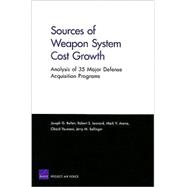
| Introduction | p. 1 |
| Background | p. 1 |
| Objective of This Study | p. 2 |
| Organization of This Report | p. 4 |
| Study Approach | p. 5 |
| Selection of Programs for Analysis | p. 5 |
| Selected Acquisition Reports | p. 8 |
| Classifying Cost-Growth Variances | p. 9 |
| Problems in Interpreting SAR Cost-Variance Data | p. 11 |
| Analysis of Programs | p. 13 |
| Cost-Variance Categories | p. 14 |
| Mapping of SAR Variance Categories | p. 20 |
| Problems in Categorizing Cost Growth | p. 22 |
| Cost Growth in Selected Programs | p. 25 |
| Presentation of Data | p. 25 |
| Multiservice Program Sample | p. 27 |
| Comparison of Cost Growth in Air Force and Non-Air Force Programs | p. 35 |
| Total Cost Growth, by Type of Program | p. 40 |
| Summary and Recommendations | p. 45 |
| Cost-Allocation Challenges | p. 45 |
| Results of This Analysis | p. 46 |
| Where Should Air Force Decision makers Direct Their Focus? | p. 49 |
| Future Research | p. 50 |
| Cost Growth of Individual Programs | p. 53 |
| Weighted Cost Growth | p. 71 |
| Trigger Events | p. 77 |
| OSD Guidance and Definitions of the SAR Cost-Variance Categories | p. 83 |
| Bibliography | p. 89 |
| Table of Contents provided by Blackwell. All Rights Reserved. |
The New copy of this book will include any supplemental materials advertised. Please check the title of the book to determine if it should include any access cards, study guides, lab manuals, CDs, etc.
The Used, Rental and eBook copies of this book are not guaranteed to include any supplemental materials. Typically, only the book itself is included. This is true even if the title states it includes any access cards, study guides, lab manuals, CDs, etc.